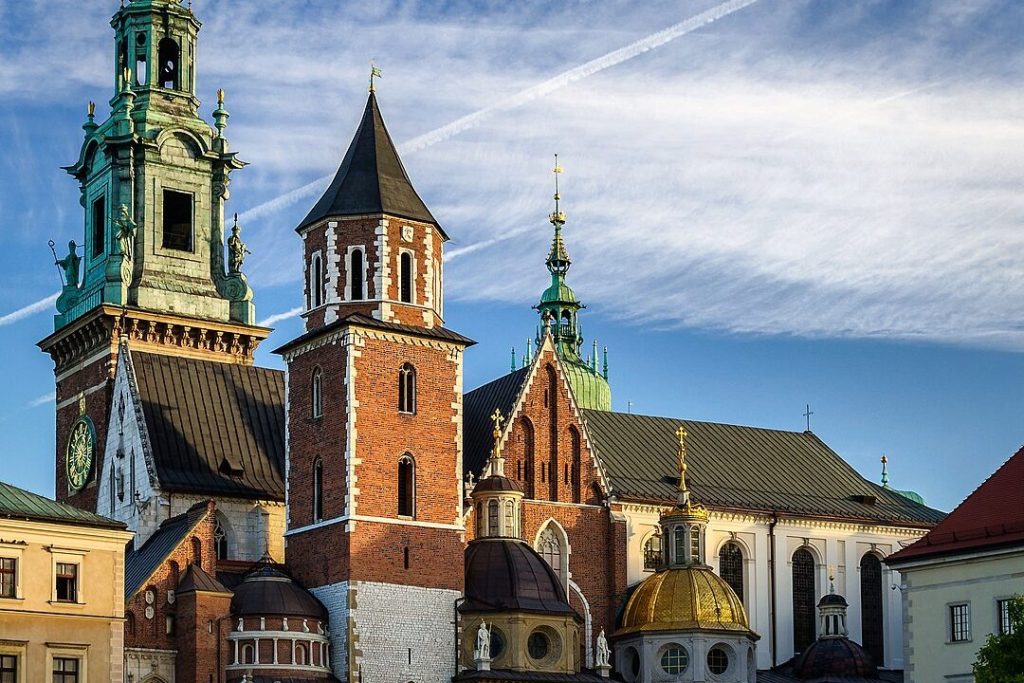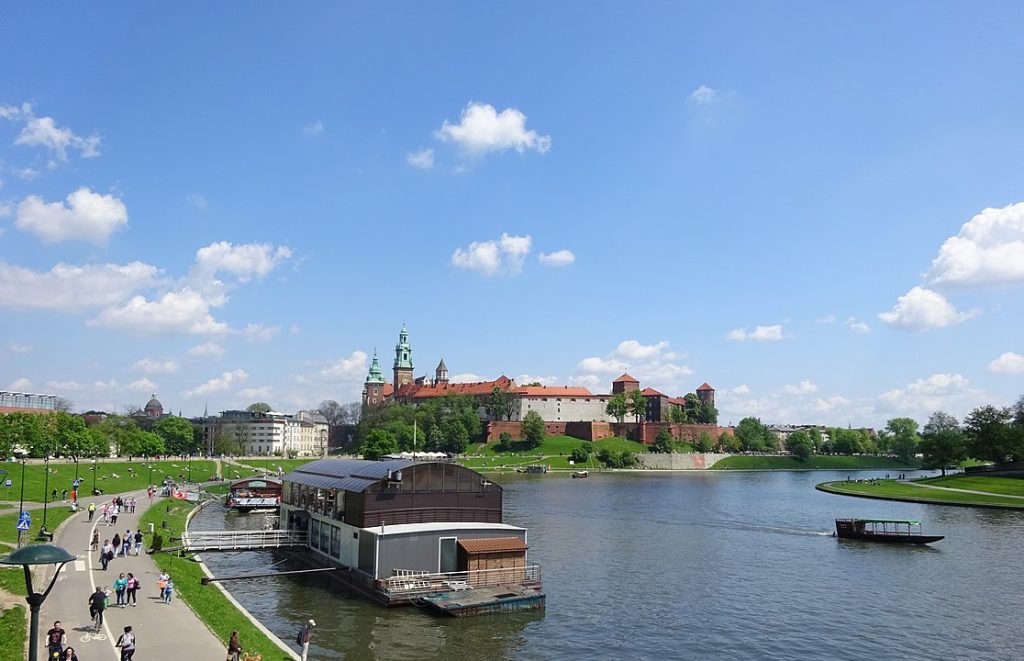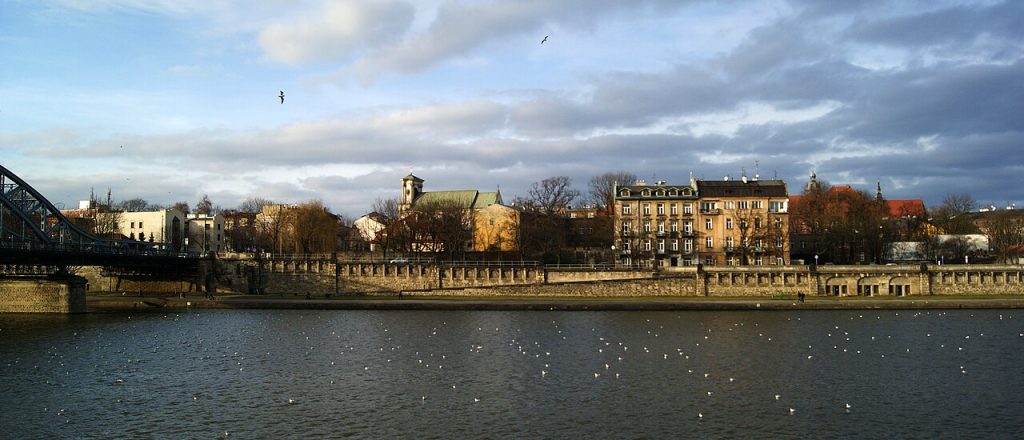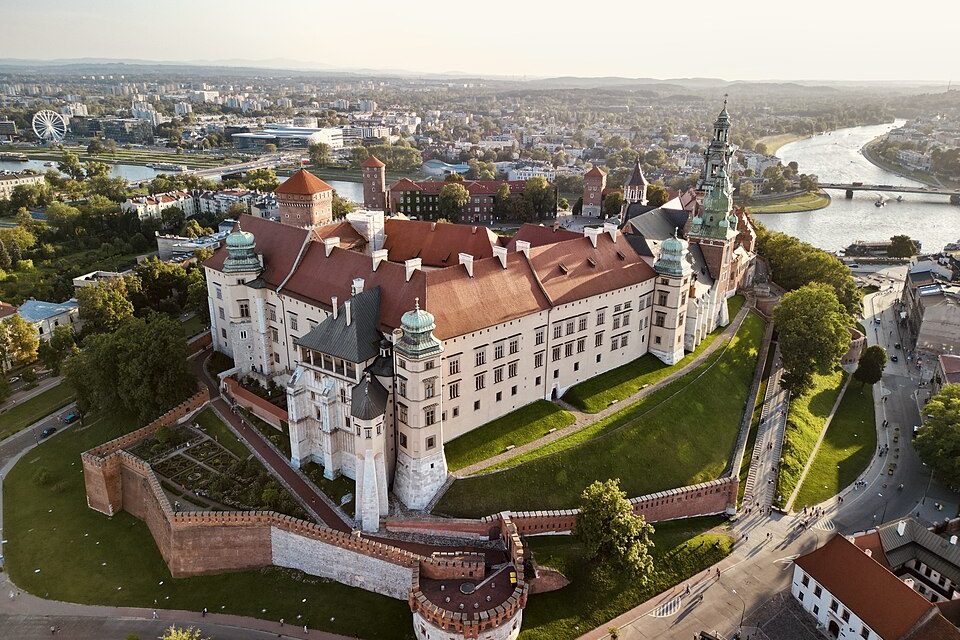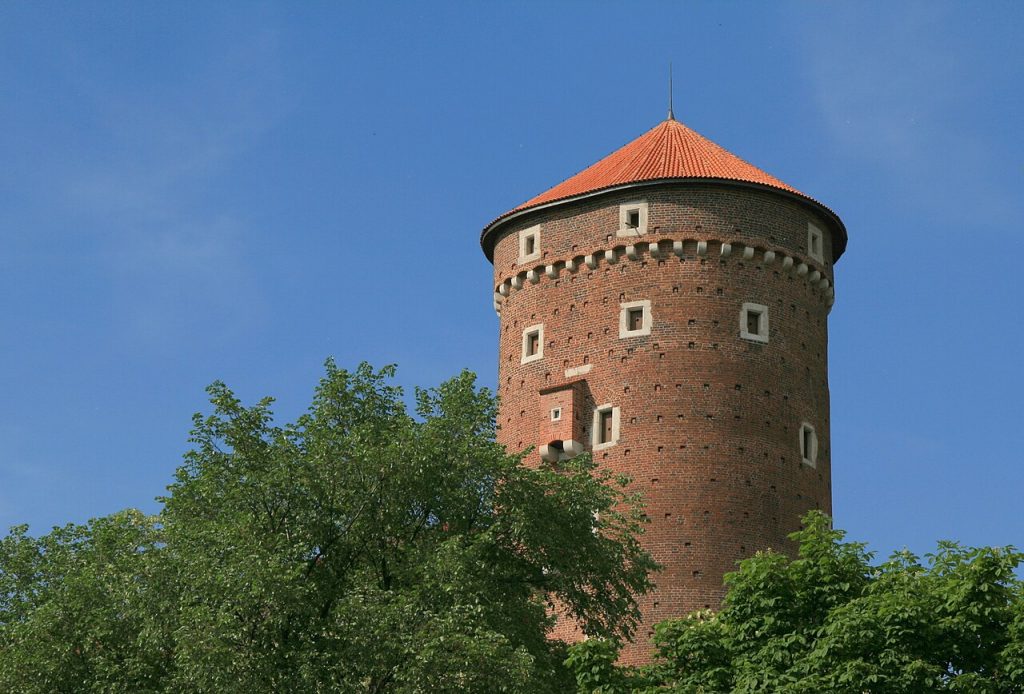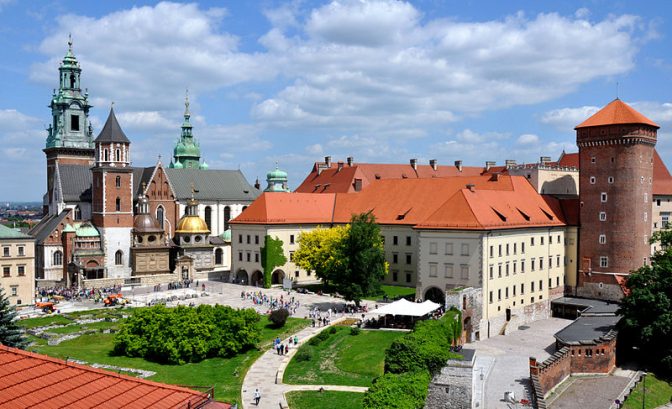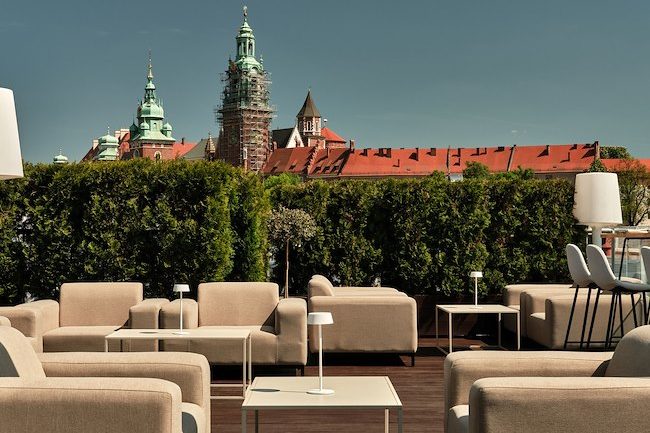- 1️⃣ Origins of St. Mary's Church - medieval foundations
- 2️⃣ St. Mary's Towers - rivalry, legend and symbol of the city
- 3️⃣ Bugle from the tower - the world's shortest concert
- 4️⃣ Wit Stwosz's masterpiece - an altar that will take your breath away
- 5️⃣ Interior of the church - a Gothic space full of color
- 6️⃣ St. Mary's Church in the history of Poland - a witness to the epochs
- 7️⃣ Religious and spiritual role - the heart of the Krakow community
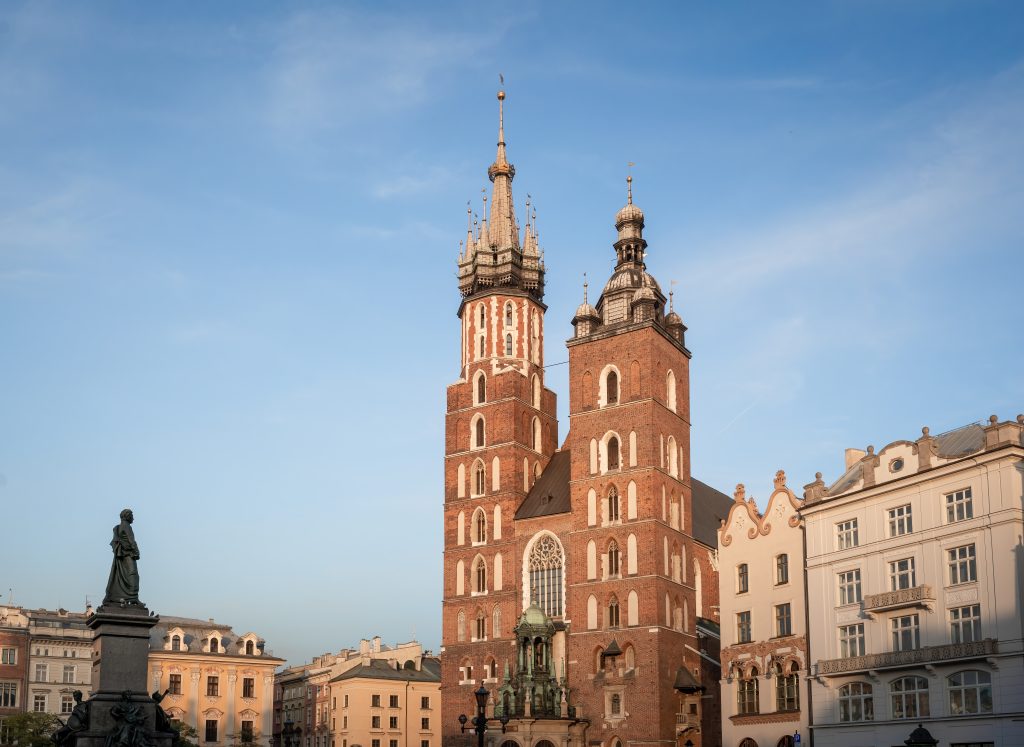
St. Mary's Church, towering over the Main Square, is one of the most recognizable buildings not only in Krakow, but also in all of Poland. The two uneven towers, the daily bugle call resounding from their top, the monumental altar of Wit Stwosz and the Gothic façade all make the temple a an inseparable symbol of the city, its spiritual heart and witness to more than seven centuries of history.
This is the place where art meets faith, and the past blends with the present. Stepping inside the church, visitors not only admire its architecture, but also the experience an atmosphere that has endured for centuries. In this article we take you on a journey through the history, legends, details and symbols of this remarkable temple.
1️⃣ Origins of St. Mary's Church - medieval foundations
🏰 The heart of Krakow that you can't miss
👉 Krakow Market Square - Tourist attraction
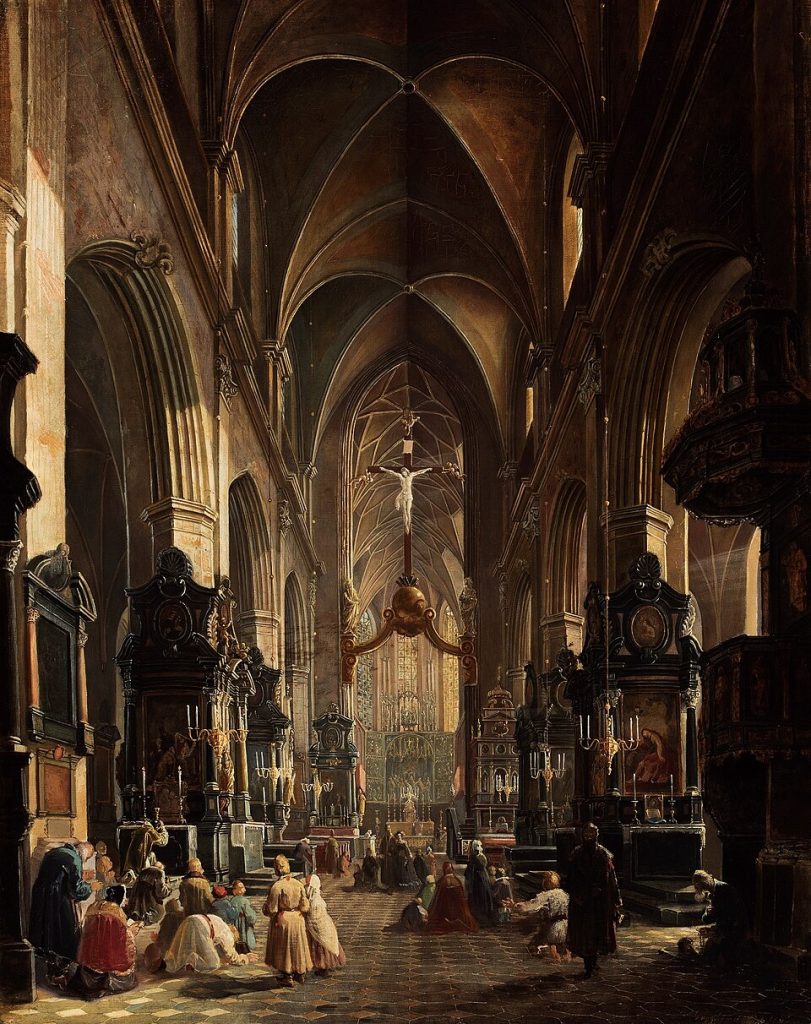
Although today St. Mary's Church dominates the Main Square and is one of the most recognizable symbols of Krakow, its history dating back to the 13th century, and the origins of the temple are linked to the rapid growth of the city after it was granted city rights.
💠 The first temple and the development of the city
The first parish church on the site was probably built as early as the 1320s. It was a building Romanesque, which did not survive the Tatar invasion of 1241. After the city's incorporation in 1257, construction of a new city began, gothic church, whose mass - expanded over the following centuries - has become an integral part of Krakow's skyline.
💠 Patroness of the city and the temple
The church was dedicated Assumption of the Blessed Virgin Mary, which had great symbolic significance - For Mary was considered the patron saint of Krakow. Already in the Middle Ages, the temple gained prominence a place of worship and an important religious center.
💠 Relationships with the bourgeoisie
It is not the kings, but rich cracow burghers They were the main funders and caretakers of the temple. Thanks to their support St. Mary's Church gained not only a monumental form, but also a outstanding works of art, which adorn its interior to this day.
2️⃣ St. Mary's Towers - rivalry, legend and symbol of the city
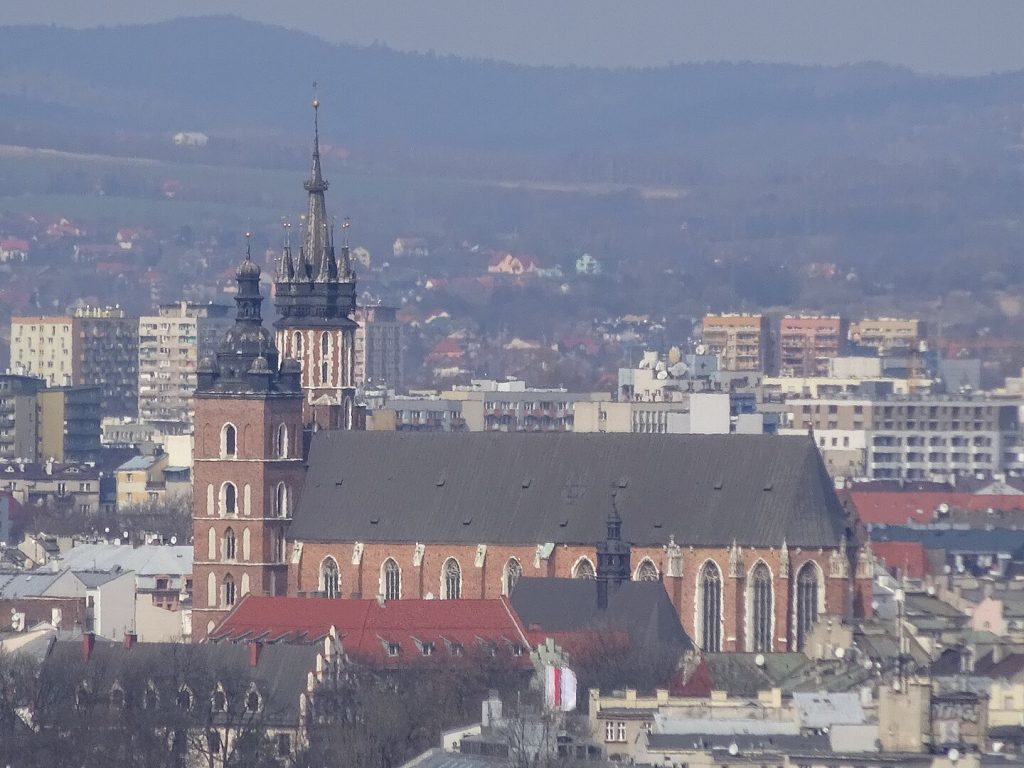
The two uneven towers of St. Mary's Church are not only the result of an architectural decision, but also of a The beginning of one of Krakow's most famous legends. Their distinctive silhouette has become symbol of the city, recognized throughout Poland and abroad.
💠 Uneven towers - fact or deliberate procedure?
Higher, measuring approx. 82 meters, serves today as a vantage point and a place from which the bugle is played daily. The lower one - with a height of approx. 69 meters - serves as a bell tower. The difference has long aroused the curiosity of researchers, and the lack of clear records in documents has only fueled conjecture.
💠 The legend of two brothers
According to one of the most popular Krakow stories, the towers were built by two mason brothers, who competed to see who would erect a taller and more beautiful structure. When the younger of the two noticed that his brother's work was going faster, in a fit of jealousy stabbed him, and in time - tormented by remorse - threw himself from his own tower. The deadly tool can be seen today in the Cloth Hall.
💠 Towers as a hallmark of Krakow
Over the years, the two towers - despite their height difference - have become a a harmonious part of the panorama of the Main Square. It is from the higher of the two that the bugle is played, and its Gothic spire with crown is a motif that appears on countless souvenirs, paintings and photos from Krakow.
3️⃣ Bugle from the tower - the world's shortest concert
🗺 First time in the city of kings?
👉 Top 15 of Krakow's biggest attractions
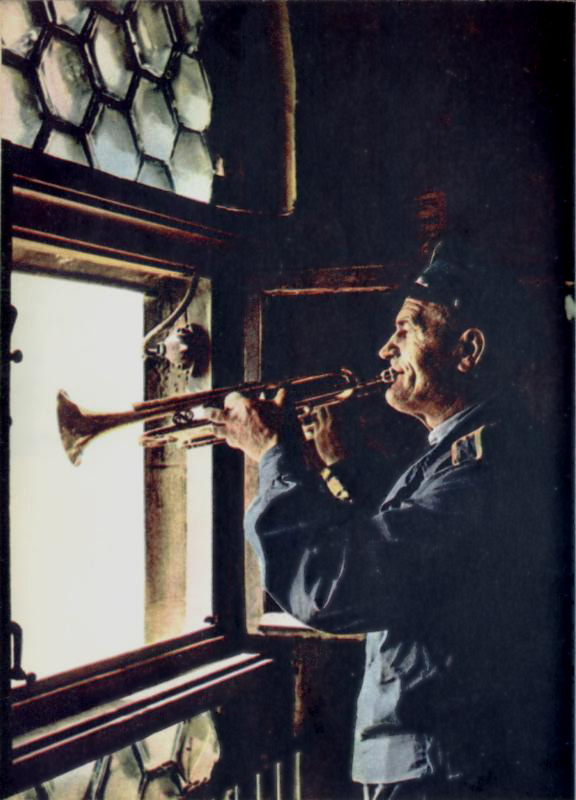
Every day, at exactly one full hour, the following sounds from the higher tower of St. Mary's Church bugle call - a distinctive melody that has become one of the most recognizable sounds in Poland. It is not only a tourist attraction, but also a a living tradition with centuries of history.
💠 History of the bugle call
The tradition of playing the bugle dates back to at least 14th century. Initially it was a signal municipal guard, which announced the hour and warned of danger - such as a fire or an approaching enemy. Over time, it became symbolic ritual, played for residents and visitors.
💠 Why does the melody stop?
The most distinctive feature of the bugle call is the following. abruptly cuts off. According to legend, a trumpeter during a Tartar invasion in 1241 spotted the approaching invaders and began to alert the city. He was killed by a gunshotBefore he could finish the melody. To this day, the bugle calls off in the same place - in remembrance of this event.
💠 Hejnał live and on the air
The bugle call is played live every hour, including at night, by on-duty firefighters. Since 1927, it has been broadcast at noon on the air Polish Radio - is one of The oldest continuously broadcast programs in the world. It is listened to by several million people every day - both at home and abroad.
4️⃣ Wit Stwosz's masterpiece - an altar that will take your breath away
🌄 Do you love high-altitude views?
👉 Viewpoints and terraces in Krakow
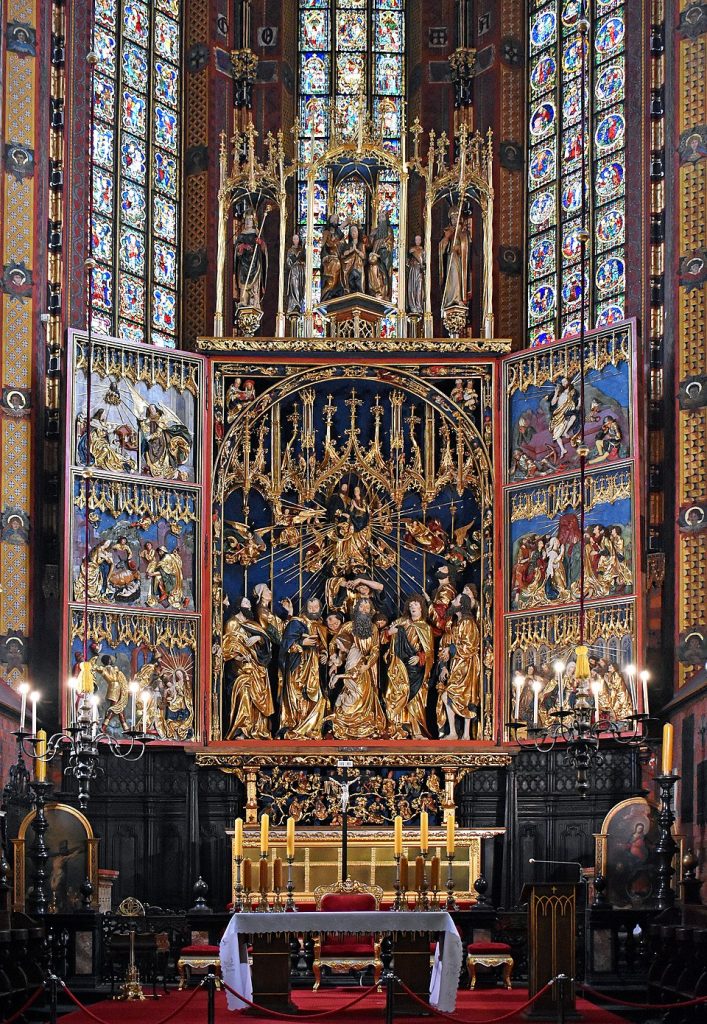
At the heart of St. Mary's Church is the One of the finest Gothic altarpieces in Europe - monumental work Wit Stwosz, which has delighted pilgrims, tourists and art historians for more than 500 years. It is not only an altar, but a sculptural tale of faith and human emotions.
💠 Nuremberg master in the service of Krakow
Wit Stwosz - an outstanding sculptor from Nuremberg - was invited to Krakow in the 1570s. He worked on the altarpiece for approximately 12 years (1477-1489), creating a work that is still awe-inspiring today thanks to the realism, expression and enormity of performance.
💠 Giant construction and emotions enchanted in wood
The altar measures About 13 meters high and 11 meters wide. Made of oak and linden wood, it shows scenes from the life of the Virgin Mary, with particular emphasis on Dormition and Assumption. Each of the more than 200 figures is unique, full of emotions and details - in the faces of the saints and apostles can be seen pain, amazement, delight.
💠 The fate of the altar - looting and return
During World War II, the altar was looted by the Germans and deported to Nuremberg. Thanks to the efforts of Polish conservators, it returned to Krakow in 1946. In recent years it has undergone a thorough maintenance, thanks to which we can again admire his original colors and details.
5️⃣ Interior of the church - a Gothic space full of color
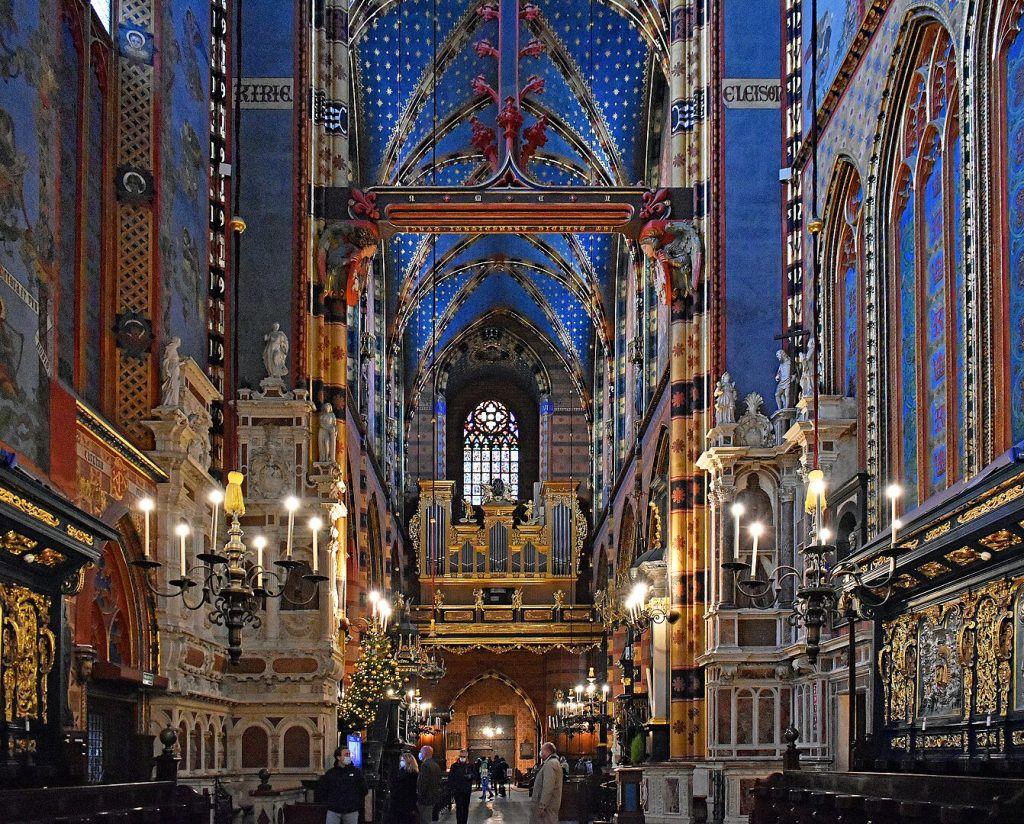
Crossing the threshold of St. Mary's Church, many visitors pause in awe. Here, Gothic architecture combines with Baroque splendor and Renaissance harmony to create a amazing, colorful sacred space, in which every wall and vault tells its own story.
💠 Vault like a sky full of stars
Over the heads of the faithful stretches the blue vault with gilded stars, creating the impression of heaven inside the temple. Tall, slender pillars and pointed arcades give the space a lightness and majesty typical of the Gothic style.
💠 Polychromes by Jan Matejko and his students
In the 19th century, the interior of the church gained new splendor thanks to the work of the Jan Matejko, who designed rich polychromes covering the walls. He was assisted in the project by, among others. Stanislaw Wyspianski and Jozef Mehoffer - later artists of Young Poland. The paintings depict biblical scenes and plant ornaments, fitting harmoniously into the Gothic architecture.
💠 Chapels, altars and details
The interior hides numerous side chapels, richly decorated altars and sculptures, as well as a Gothic pulpit and organ. Among the details worth noting are beautifully carved stalls and stained glass windows, which filter light, creating colorful reflections dancing on the floor.
6️⃣ St. Mary's Church in the history of Poland - a witness to the epochs
🎠 Krakow with children?
👉 Top 10 - attractions for children in Krakow
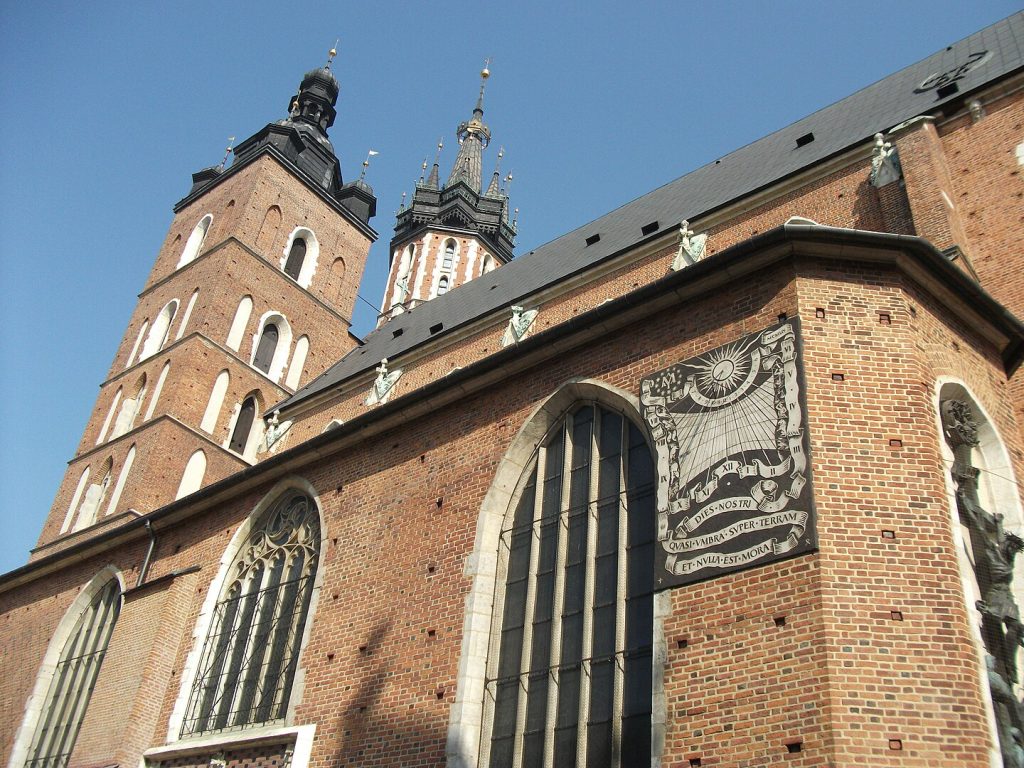
St. Mary's Church is not only a place of prayer and an architectural gem - it is also a Almost a living witness of Polish history. For more than seven centuries he observed changing regimes, rulers, tragedies and victories - always present at the center of events in Krakow and Poland.
💠 Temple of the royal city
When Krakow was the capital of Poland, St. Mary's Church played an important role in the life of the royal court and the city. It was from its tower bugle call was played to welcome rulers and messengers, and from under its walls ceremonial coronation processions set off.
💠 A place of national elation and mourning
Within the walls of the temple were held solemn patriotic services, masses for the homeland and prayers during the partitions. During the partitions and occupation, the church was a spiritual mainstay of krakowians, and its presence was a reminder of continuity of the national and spiritual community.
💠 The Church in the Twentieth Century
In the 20th century, St. Mary's Church survived World War II, when the Nazis looted the altar of Veit Stoss, but did not destroy the building itself. After the war, already during the communist era, the temple was an important place of spiritual resistance, gathering the faithful around the message of freedom and faith.
7️⃣ Religious and spiritual role - the heart of the Krakow community
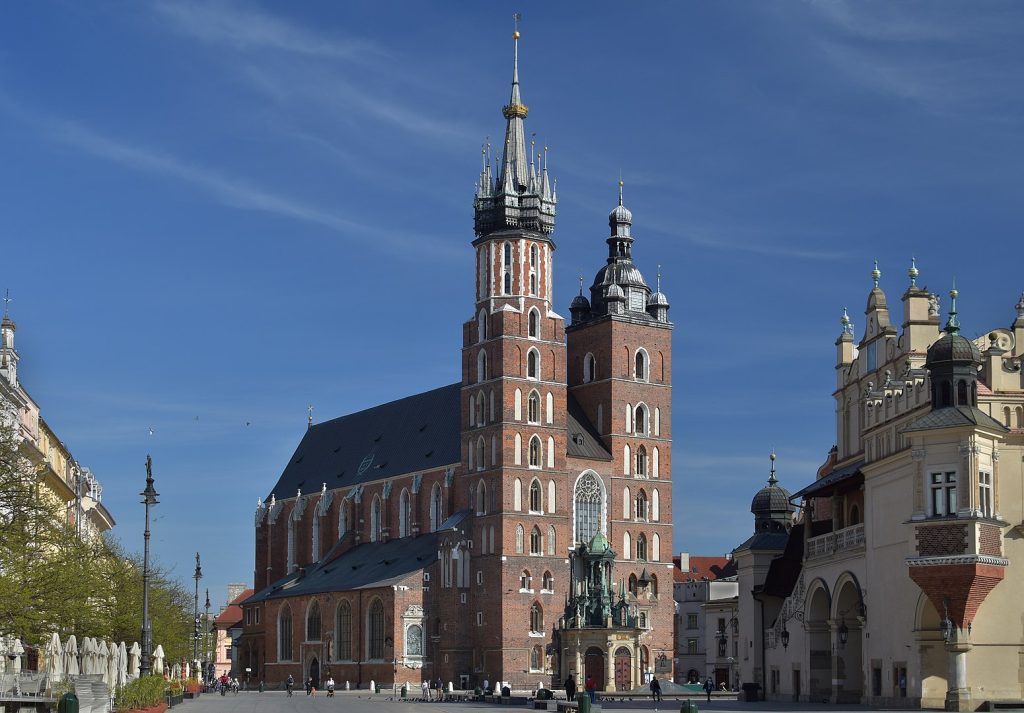
Although St. Mary's Church attracts tourists from all over the world, its primary and invariable function is to be a place of religious worship. It's still active parish, a lively community of the faithful and the spiritual heart of Krakow, where prayer blends with history and tradition.
💠 A parish with a centuries-old tradition
St. Mary's Church serves as the parish church uninterrupted since the 13th century. It is here that the daily masses, weddings, baptisms and services attended by both residents of Krakow and pilgrims from Poland and around the world.
💠 A place of exceptional liturgies
Important religious holidays, such as Christmas, Easter or Assumption of the Blessed Virgin Mary., are celebrated at St. Mary's Church with exceptional grandeur and setting. Of particular importance here are Marian celebrations, because it is Blessed Virgin Mary She is the patron saint of this temple.
💠 Church open to everyone
Despite its status as a monument and tourist attraction, St. Mary's Church remains a a place of silence, prayer and recollection. Special entrances and prayer areas allow worshippers to attend services even during peak tourist hours. This spiritual refuge Amidst the hustle and bustle of the Main Square.
8️⃣ Tourists and pilgrims - what sightseeing looks like today
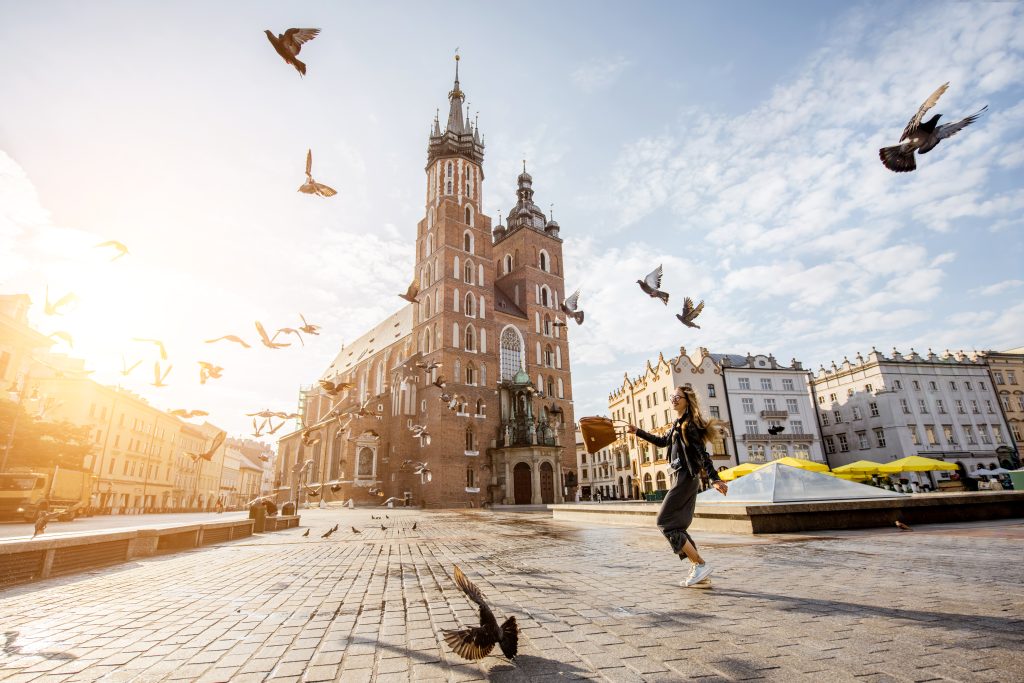
For many people, a visit to Krakow would not be complete without entering St. Mary's Church. It is a place that connects Sacred function with openness to culture and tourism, attracting both the faithful and curious world travelers.
💠 Two inputs, two functions
St. Mary's Church has separate entrance for those praying and for visitors. Tourists can see the interior of the temple after purchasing a ticket, which helps to preserve the peace and dignity of the place of prayer. As a result, a balance was struck between religious vs. cultural sphere.
💠 Guided and self-guided tours
Tickets are available for entrance to the main nave and chapels, as well as the opportunity to entrances to the higher tower, from which extends panorama of Cracow. Visitors can use audio guides, mobile apps or guided tours that introduce the history and symbolism of the temple.
💠 Pilgrimages and religious events
St. Mary's Church remains a destination pilgrims from all over Poland. It also hosts national events, such as. masses broadcast in the media, patriotic services or concerts of sacred music. It is a place where Spirituality meets history and beauty.
9️⃣ Secrets and curiosities - details that are easy to overlook
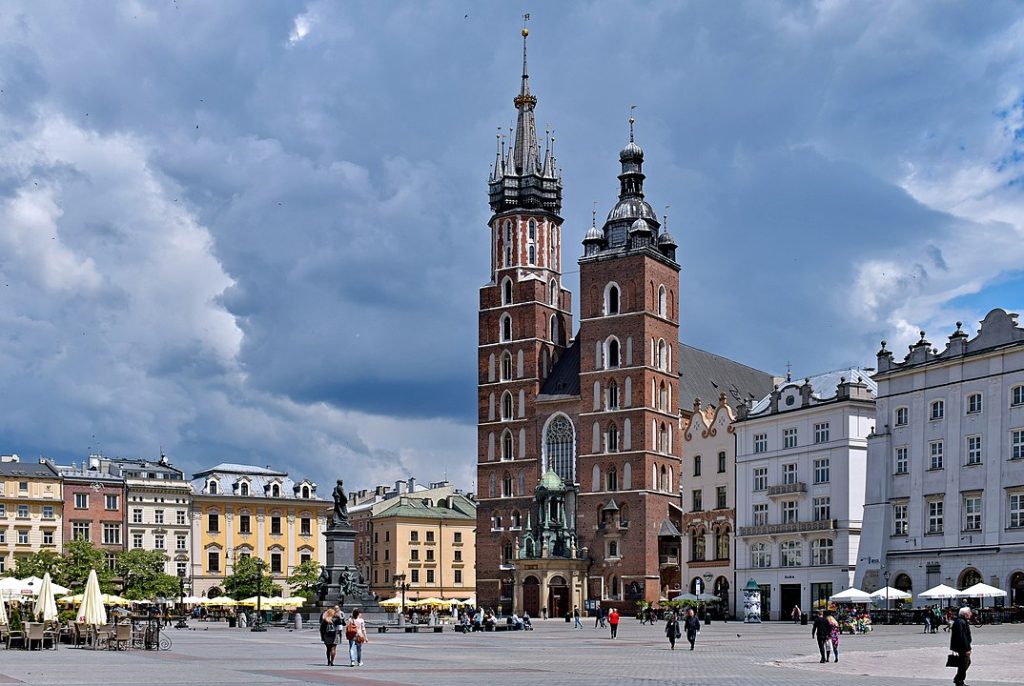
St. Mary's Church is not only a monumental structure and a famous altar - it is also a hundreds of hidden details, anecdotes and symbols, which can be discovered on each subsequent visit. It's worth raising your eyes, peeking into the side chapels and slowing your step to see what often gets missed in a hurry.
💠 Knife over the entrance to the Cloth Hall
The legend of the two brothers building the towers of St. Mary's Church has its own tangible footprint - A curved knife hung under the vault of the Cloth Hall. It's allegedly a murder weapon that was meant to warn against envy and remind us of the tragic consequences of rivalry.
💠 God's eye and geometric details
Inside the temple you can see symbolic representation of the Eye of Providence, inscribed in a triangle - the sign of the omniscient God. They also draw attention Gothic geometric details in the decorations of the pillars and vaults, which allude to medieval symbolism of number and proportion.
💠 Traces of past customs and eras
The church includes epitaph plates of former townsfolk, testimony to the wealth and influence of the Cracow families. In some places you can also see Original medieval paintings discovered under later layers, as well as blend of styles - from Gothic to Baroque - showing how the temple has changed over the centuries.
📌 Summary - why St. Mary's is more than a monument
St. Mary's Church is not only a masterpiece of Gothic architecture nor a popular spot on the tourist map of Krakow. It is, above all a living symbol of the city, which for centuries combines the sacred with the everyday, history with the present, the local community with pilgrims from all over the world.
💠 Spiritual and cultural center
St. Mary's serves at the same time as places of prayer, history and art. The daily bugle call, extraordinary interior, masterpieces of sacred art and unique atmosphere make it a space where the everyone can find something for themselves - regardless of beliefs.
💠 Symbol of continuity and identity of Krakow
The Church has survived wars, partitions and political transformations, always remaining a point of reference for the city's residents. Its towers, the altar of Wit Stwosz and the bugle call from the tower are all elements that permanently inscribed in the consciousness of Poles.
💠 A place to return to
For many people, St. Mary's Church is not just a stop on a sightseeing tour, but a a place of reflection and delight, to which one wants to return - to look up, listen to the bugle call or just feel the spirit of Krakow.



